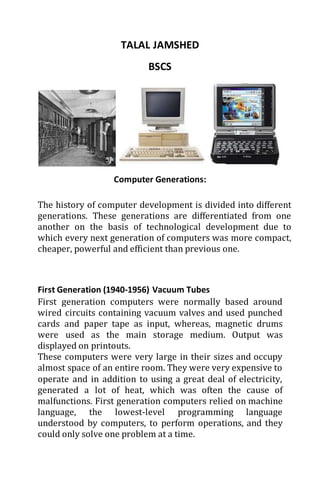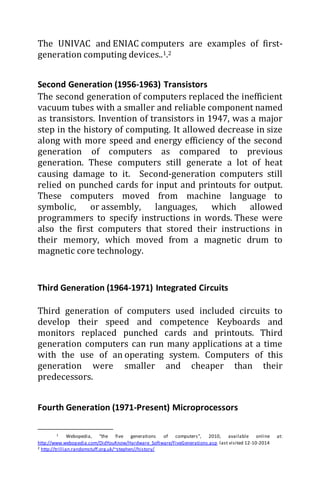The document discusses the five generations of computers from the 1940s to present. The first generation used vacuum tubes, were large and expensive. The second generation used transistors, which made computers smaller and more efficient. The third generation used integrated circuits and introduced keyboards and monitors. The fourth generation used microprocessors, making computers small enough to fit in your hand and leading to networks and the internet. The fifth generation involves artificial intelligence and technologies still being developed.


